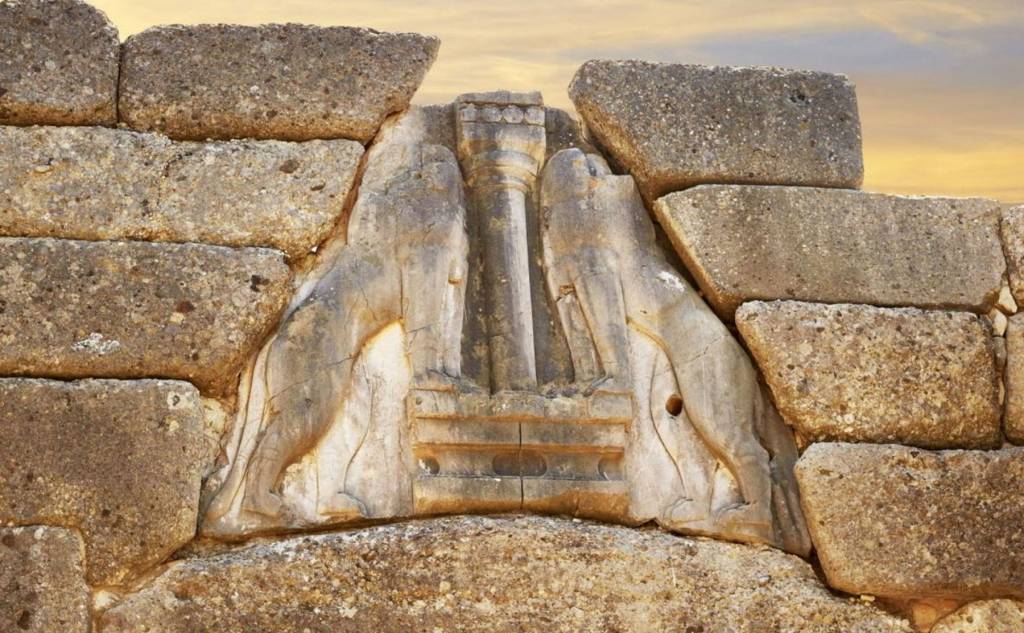Mycenae
Highlights
The impressive Cyclopean Walls.
The Lions’ Gate
The Domed Tombs
The museum with the plentiful findings
GET IN TOUCH
Spread the word


The archaeological site of Mycenae is located in the north-eastern Peloponnese, in Argolis, about 90 kilometres from Athens. "Polychryses (multi golden) Mycenae", as described by Homer in his epics, is the most important and richest palatial centre of the Late Bronze Age (1350 BC - 1200 BC) in Greece, and the archaeological site has been declared a World Heritage Site by UNESCO. According to mythology, the founder of Mycenae was Perseus, son of Zeus and Danae (daughter of the king of Argos).
Regarding the name of the ancient city, two theories have been recorded. The first shows Perseus naming the new town Mycenae because the sheath of his sword ("mycys") fell there, and the second relates the name to the discovery of a spring (Persian spring) with abundant water under the root of a mycetas (mushroom ).
The oldest human activity in the area dates back to the 7th millennium BC., during the Neolithic era. The habitation was continuous until historical times. The majority of the monuments, however, which are visible today, belong to the area’s heyday, the Late Bronze Age. At that time, Mycenae was one of the largest centres of Greek culture, with 30,000 inhabitants constituting a very powerful military fortress.
In 1876, Henry Schliemann began the significant excavation, discovering the famous vertical pit tombs and various vessels - unique examples of the Mycenaean civilisation. Schliemann's work was continued, after 1888, by archaeologist Christos Tsoundas. The latter brought the palace at the top of the Acropolis, as well as several chambered tombs on the broader area, to light. From 1919 to 1955, the excavation work was continued by English archaeologist Alan Wace, director of the British School of Archaeology.
In the archaeological site of Mycenae, visitors can see, among others, the following monuments:
The Vaulted tomb of Atreus: The vaulted tomb of Atreus dominated the southwest of the Mycenae Acropolis. It is the most impressive of the nine Mycenaean vaulted tombs found in Mycenae and dates between 1350 BC. and 1250 BC. Access to the tomb was through the road (36 metres long and 6 metres wide), and the tomb’s facade was decorated with semi-columns made of green stone with relief elements. Today, only the square bases on either side of the entrance remain in their original position. The circular chamber of the tomb is covered with a honeycombed dome, built with 33 consecutive rows of smooth oblong tonsil stones.
The religious centre of Mycenae: It is located in the southwestern part of the Acropolis and is a complex of buildings built from the end of the 14th century BC. to the middle of the 13th century BC.
The Cyclopean walls of Mycenae: The imposing defensive Cyclopean walls date back to the late 13th century BC. and follow the natural configuration of the ground, forming an imaginary triangle.
The Lion Gate of Mycenae: This magnificent megalithic monument is considered the first example of monumental sculpture known in Europe. This was the main entrance to the Acropolis of Mycenae and was built around 1250 BC. The Gate takes its name from the relief representation of the two lions that adorn the relief triangle, which transfers the centre of gravity to the sides.
Finally, a brief mention should be made of the Archaeological Museum of Mycenae, which is located on the northern slope of the Acropolis and was inaugurated in July 2003. The museum exhibits the findings of the excavations of the archaeological site, and the exhibition is developed into four independent sections. The first two rooms are dedicated to the Mycenaeans’ life and burial customs. In contrast, the third room concerns the use of space in Mycenae during historical times and the activities of the Mycenaeans. Finally, the museum operates specialised workshops for the conservation of ceramic and metal objects.





